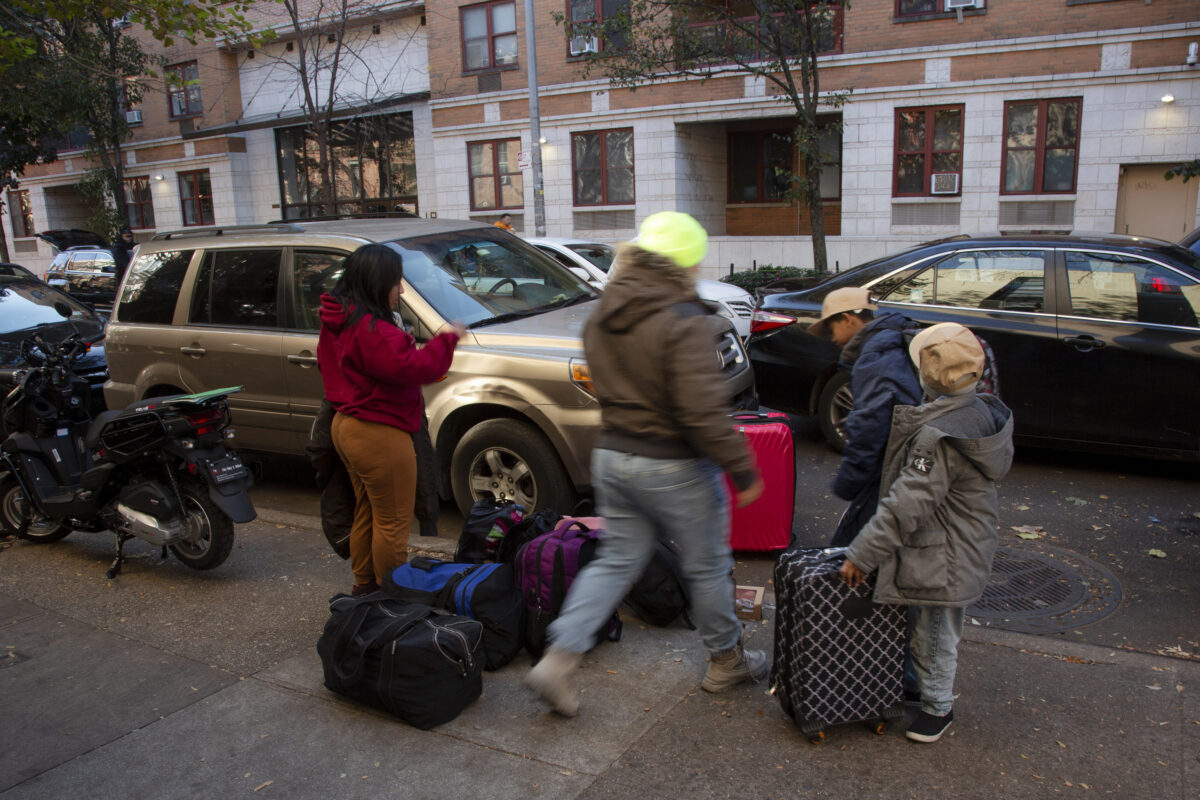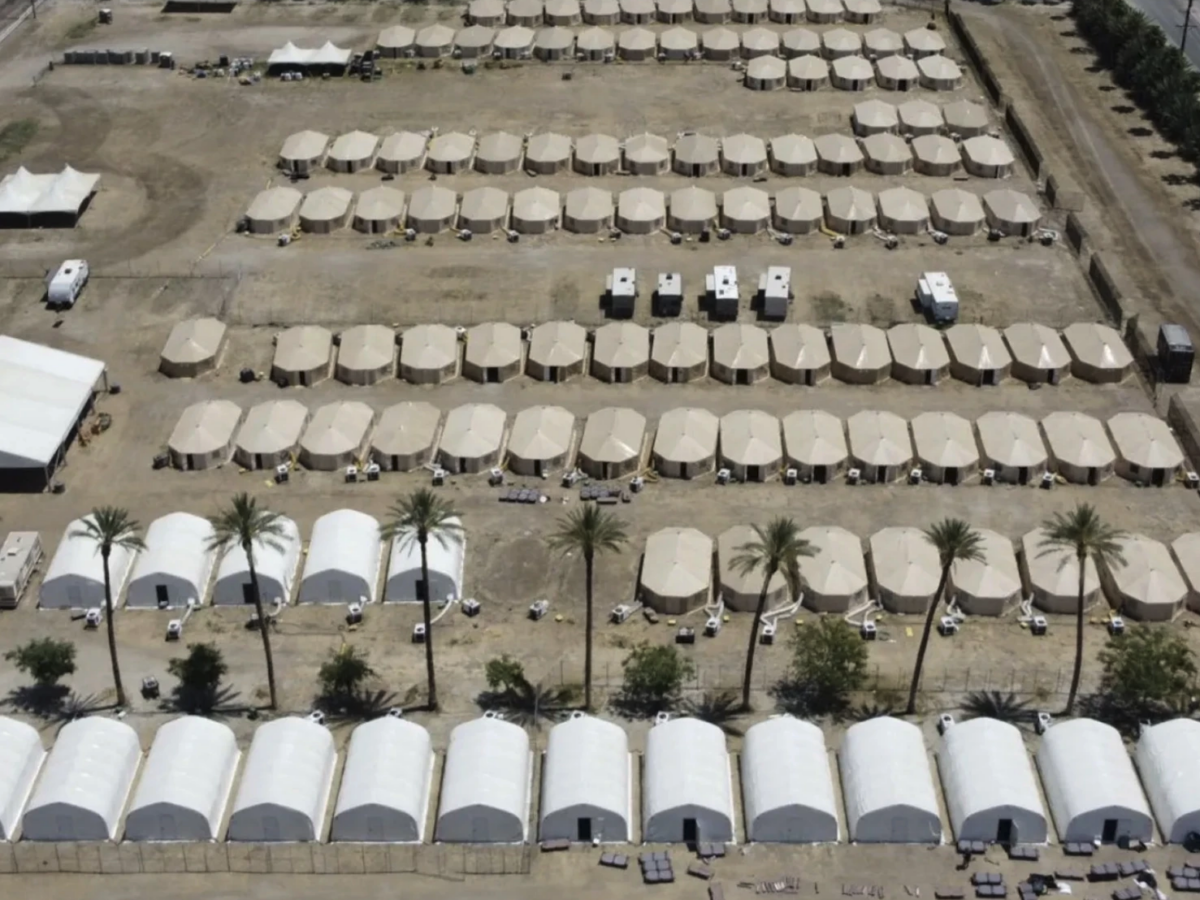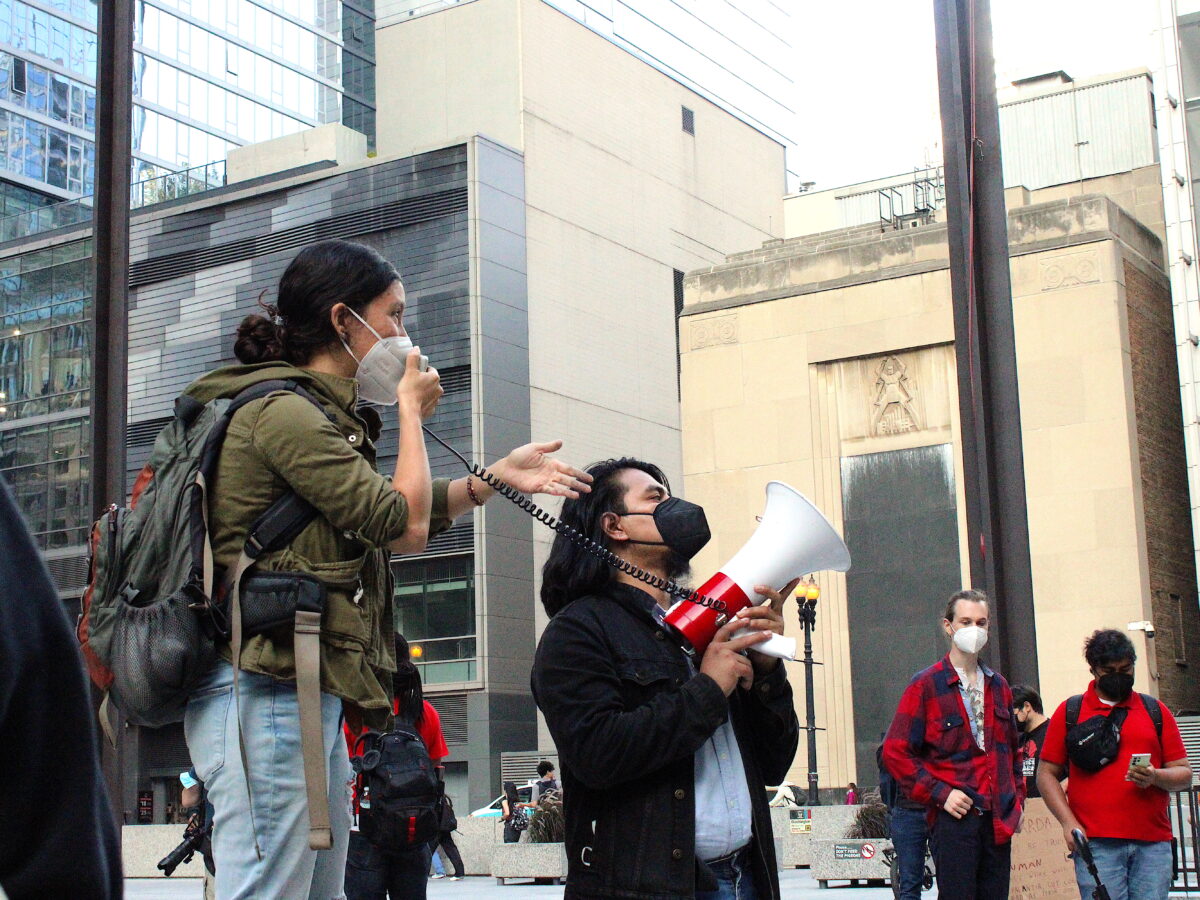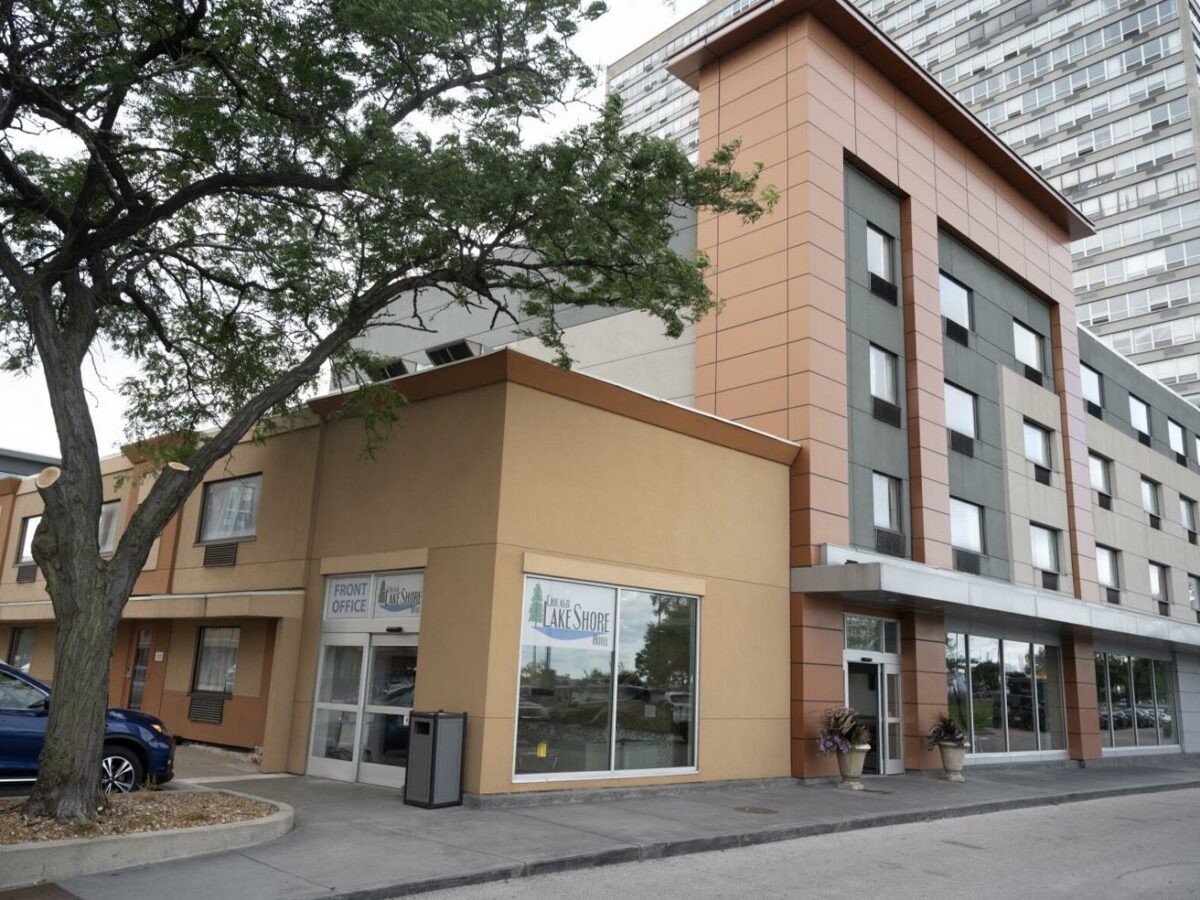The sky, clear and sunny last week above New York City’s East Village, was deceiving. It was a chilly morning, and a dozen people milled around the corner of 7th Street and Avenue B with backpacks, rolling suitcases, and plastic bags containing all their belongings. They were waiting outside St. Brigid, a former Catholic elementary school, in search of shelter. On October 16, Mayor Eric Adams announced stays in NYC’s public shelters would be limited to thirty days for single men and sixty days for families. The move challenged New York’s unique right-to-shelter mandate, which requires the city to provide a bed to any unhoused person who requests one, and it has left many migrants scrambling to find a place to stay.
“Every day the things in New York are getting uglier,” said Victor David, who left Venezuela in May to find work to support his young daughter. He spent two months crossing Central America and arrived at the U.S. border in July with only fifty dollars to his name, having sold most of his belongings to pay for safe passage through the Darién Gap. He recently had to leave the New York shelter system when his thirty days were up and has been struggling to find a place to stay. He has spent at least one night sleeping on the street.
“Things are no longer the same as before” at the shelter, David said. “They woke me up. They told me that I had to go now and I asked them where I could go to, that I had no family, nowhere to go, but … they told me that I had to go now, that they couldn’t do anything else for me.”
As winter encroaches, New York City shelters are evicting and turning away migrants, leaving them to fend for themselves. The only option the city now offers is a one-way plane ticket out of the city. As Mayor Eric Adams’s administration makes it increasingly difficult for migrants to be self-sufficient in New York, many are taking the city up on their offer to leave. Some are choosing Chicago.
On October 24, New York City opened an office at St. Brigid whose sole purpose is to provide one-way tickets for migrants to any location of their choice. The Weekly spoke to several migrants outside St. Brigid who were evicted from the city’s shelter system about where they might choose to travel, and whether they consider Chicago an attractive destination. The responses were mixed, and many said their ties to family or friends in destination cities were more consequential than the level of public services provided by the cities. Most of the people we spoke to were not aware of what services Chicago is providing.
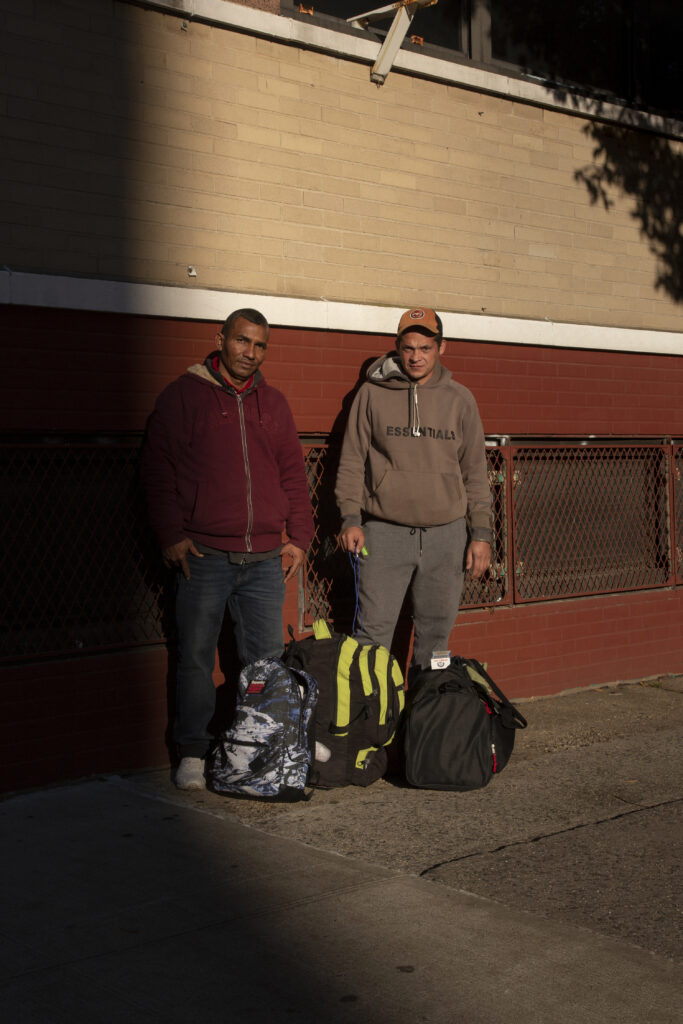
More than 130,000 migrants have arrived in New York since last spring, and the city currently provides emergency shelter to more than 65,000. Last month, New York began a more aggressive policy of evicting thousands of people from shelters and plans to push out even more, citing capacity shortages.
“I cannot say this enough. You know, we are out of the room,” Adams said at a press conference two weeks ago. “It’s not ‘if’ people will be sleeping on the streets, it’s ‘when.’”
New York City released data showing that as of October 22, approximately 13,500 migrants have received sixty-day notices to vacate shelters, and more than 6,500 have received thirty-day notices, meaning that over the next two months, over 20,000 migrants will be kicked out of the shelter system, with the only city support being a free one-way ticket to anywhere they choose. Nearly 8,500 adults have already seen their thirty- or sixty-day notices expire so far. In recent weeks, some asylum seekers were evicted before their thirty days were up when the NYC Fire Department abruptly closed multiple shelters due to potential fire-code violations.
Last month, prior to New York City’s adoption of the fly-out policy, members of Mayor Brandon Johnson’s administration conducted a site visit of the base camps operating in New York. According to Cristina Pacione-Zayas, Johnson’s deputy chief of staff, the Chicago team did not discuss New York’s plans to limit shelter and fly out migrants with anyone from the Adams administration.
The migrants who the Weekly spoke with outside St. Brigid had recently come to the end of their city-run shelter time limits, upon which most were suddenly forced out and told to go to St. Brigid’s address for relocation. Many were shocked by the news, having been given notice to leave that very morning. Others were given a seven-day notice. Confusion was common. Locating St. Brigid was not easy. A letter-sized sign taped to a door is all that announces the center’s presence in the building. In five different languages, it reads: “THIS IS NOT A RESPITE SITE/SHELTER. THERE ARE NO BEDS AT THIS SITE. WE ARE HERE TO HELP YOU GET TO TRANSPORTATION TO ANY STATE, OR COUNTRY OF YOUR CONVENIENCE.”
Until the end of August, St. Brigid was a respite center offering cots for the night to migrants. The site reopened on October 21, but as a “reticketing center” where the only service offered is a one-way ticket to leave the city.
Migrants said employees in St. Brigid were civil but did not give many answers or options to those who wanted to stay in New York. If the migrants did not accept a one-way ticket, they were given an address in the Bronx with no further details of the location’s purpose, an offer to come back to St. Brigid if no shelter was found, or, if they were lucky, a chair to rest on and spend some time inside while making a decision.
Abdoulaye, a thirty-five-year-old man from Mauritania, was one of the migrants caught in the administrative confusion. The day before, he had gone to St. Brigid for a shelter reassignment but was directed towards an address in the Bronx where workers ultimately turned him away because they said they were full. By the time he made it back to St. Brigid, the center was closed, and without any other option, he spent the night sleeping on the subway.
“Who is going to improve anything in one month? What will one solve in a month? Nothing, man. You don’t solve anything in just a month.”
Venezuelan migrant Elio Ortega, regarding NYC’s thirty-day limit on shelter stays
The reticketing service at St. Brigid did go smoothly for some who accepted the one-way ticket. A Venezuelan family of four was at St. Brigid that day to fix an error in their flight tickets to San Antonio. They are moving out of New York because their job search hadn’t been fruitful, and they wanted to try their chances in Texas.
While NYC officials maintain that the reticketing option is purely voluntary, migrants say that the lack of other options and poor conditions at shelters are squeezing them out.
Victor David said that staff at some shelters he stayed in were abusive. “They themselves make you go away, make you go into depression,” David said. “Because they treat you bad and you can’t do anything, because if they raise their voice, and then you also raise your voice, they take you out of the shelter.”
The constant shuttling between shelters makes it difficult for migrants to hold down jobs and provide for themselves. Elio Ortega, originally from Venezuela, has been in the country for two months now. He tried his luck in Philadelphia but left for New York after two weeks to join his brother, whose motorcycle he now borrows for his job working as an UberEats delivery driver. In New York, Ortega spent fifteen days in one shelter before being sent to a different shelter that took him out of their system after his thirty days were up. They had sent him to St. Brigid that morning.
“Here at St. Brigid, we waste all day, one day of work to make some money,” he said, expressing frustration with the new policy.
“They give you a month here, then they send you another month somewhere else, then you get a job on another side of the city and for that job you’re late, you’re late for work and then they kick you out, why?” Ortega said. “Because you don’t arrive on time for work, because you’re now two hours away from work.”
He said the new shelter policy is a major obstacle to becoming self-sufficient, lamenting the fact that NYC government support to migrants has “collapsed” compared to the prior policy that gave migrants enough time in shelters to get on their feet.
“It’s another thing when what they give you is a month, who is going to improve anything in one month? What will one solve in a month? Nothing, man,” he said. “You don’t solve anything in just a month.”
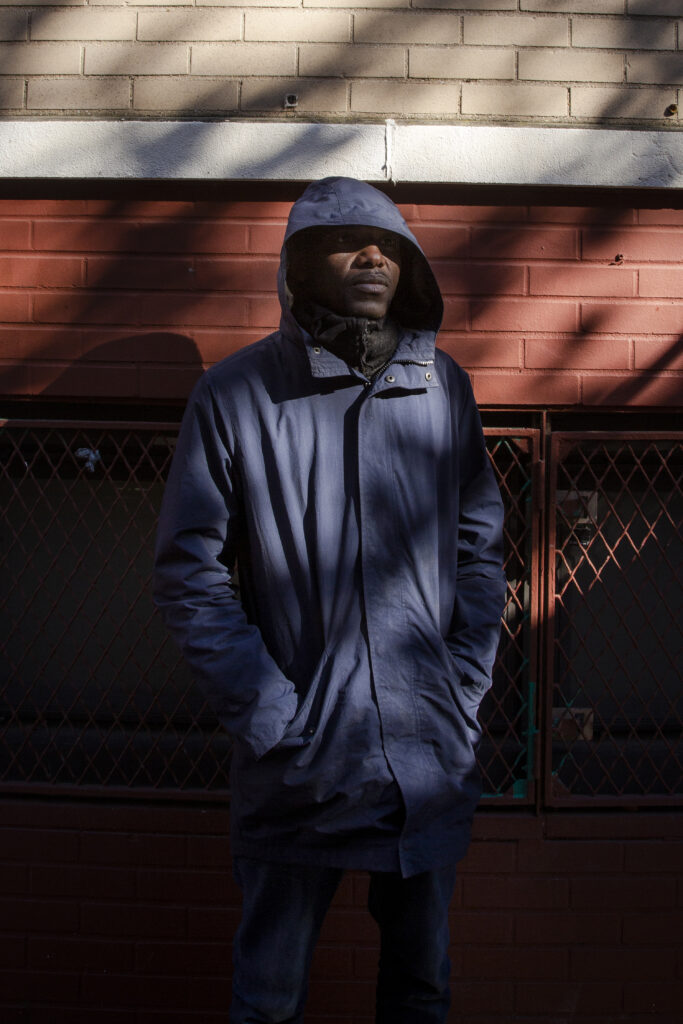
Outside St. Brigid, some migrants said they were determined to stay in New York. Others were attracted to and eventually acquired tickets to locations such as Chicago, Boston, and San Antonio, despite not having much information on the resources available to migrants in those cities or how to start their legal processes again at a new address. Moving from state to state can delay temporary protected status and work permit applications because migrants must follow up with a change of address or potentially start all over again.
Currently, Chicago is the only sanctuary city that prioritizes resettlement into permanent housing as the long-term solution for migrants. The Johnson administration is opening new migrant shelters at a rate of one roughly every six days to keep up with demand.
“All of those are steps that we’re taking to ensure that folks actually move on to be self-sufficient and independent, and then allow for additional space in our shelters,” Pacione-Zayas said at a press conference on November 9.
On Thursday, the Johnson administration announced it will limit shelter stays to sixty days for asylum seekers. The announcement also included news that migrants will no longer be eligible for up to $9,000 in rental assistance the state of Illinois had been offering them until now.
In response to the temperature drop in upcoming months, Chicago’s Mayor’s Office released a press release on October 31 that reaffirmed the city’s commitment to move any new arrivals and unhoused Chicagoans sleeping outdoors into shelters, and in the immediate term, provide warming buses and increase collaboration with organizations to provide warm clothing.
In terms of city assistance, Chicago can be an attractive destination for migrants in NYC offered a flight out. But most migrants do not want to rely on city services and most prioritize finding work so they can support themselves. Of the 23,000 migrants that have arrived in Chicago, 10,000 have moved on out of shelters or police stations, Pacione-Zayas said.
That’s the plan for Dania Rojas, a thirty-year-old from Venezuela who was at St. Brigid trying to secure a ticket out to Chicago to join his girlfriend, who is also Venezuelan.
“We’re not going after shelters or anything like that,” Rojas said. “We are already going to rent.” He said a friend in Chicago has a job and a room for rent lined up for them already.
His girlfriend couldn’t find a job in New York for over a month but was able to find employment in Chicago through their friend. Rojas doesn’t know much about the types of services Chicago provides to migrants. He said he’s choosing Chicago because he has a supportive social safety net there that does not exist in New York.
“My friend [in Chicago] says it’s not that easy, but it’s not impossible either,” Rojas explained. “When you are recommended, it’s easier, because you already have a [friend] there that can recommend you to a lot of work…Here, because I don’t know anyone here, and that’s why we’re asking to go to another state to look for other opportunities.”
Social ties are a huge determinant of where migrants choose to settle. More than a decade of research in a field called “migrant network theory” has found that family and social relationships play as much of a role as economic opportunities in the decision. Such networks provide migrants not just with important information on the conditions of potential destinations, but also can be a source of social and economic support.
Vianney Marzullo, a volunteer assisting with migrants at O’Hare International Airport, said not every migrant who was flown to Chicago did so solely because they were encouraged by an organization or because they were attracted to Chicago’s services to migrants. Some came simply because they knew someone in Chicago who could help them get on their feet.
“It’s a combination of all that to be honest, because of technology and the accessibility,” Marzullo said. “A lot of people talk among themselves.”
Marzullo added that a large portion of migrants who fly into O’Hare come with pre-determined plans to link up with existing family, and once they land in Chicago they will communicate with their family to meet up at the police station and will “exit” the shelter system to live with their family or friends. That was the case with Rojas, and Victor David, who ultimately took a ticket at St. Brigid to Boston to join his brother, who is already there.
For the same reason, Miguel Angel Carreño, twenty-eight, from Venezuela, is adamant about staying in New York, even though his thirty-day stay in shelter expired. The Weekly spoke with him during his wait outside St. Brigid until 8pm for relocation to another shelter. Though the news to evacuate the shelter is worrying “because it is hard to arrive here at zero, to be here at zero and to be taken out from the shelters is hard,” Carreno said he keeps his faith in New York because there is nowhere else where he knows people who can help him.
“To get somewhere else, where you don’t know anything, anyone or what to do, it would be difficult.”
According to City of Chicago data from the end of last month, 144 of the 536 people sheltering at O’Hare were flown in from New York City. But Chicago’s social services are also buckling under increased strain, particularly at O’Hare, a logistically challenging and newer location for sheltering migrants. The City only started tracking new arrivals in O’Hare in June, when eleven people were counted. By the beginning of October, 828 migrants were staying at the O’Hare arrival area.
Marzullo says that demographics of migrants flown in have “changed extremely” since mid- September, to include not just South American migrants sent from New York, Texas, and Colorado, but people from other parts of the world such as Nigeria and Afghanistan, as well as more families—though the majority are still from Venezuela and other South American countries. Currently, the number sheltering at O’Hare hovers between four and six hundred. The volunteer team is trying to reduce this number daily.
O’Hare has additional airport security and is far from the Loop, so teams have more hurdles to jump through to provide aid than volunteers helping migrants at police stations do. “It’s very limited what volunteers can drop off. So [for] a lot of the things, I filter the aid,” Marzullo said, adding that the welcome team isn’t prepared for the recent uptick in arrivals.
“O’Hare from the get-go technically was supposed to be a waiting [area] until they are to go to a police station so then they can go into shelter placement,” she said. “They’re only supposed to be [at O’Hare] for forty-eight hours, was my understanding from the beginning, like around June.” On average migrants at O’Hare stay for two and a half weeks, but there are some who have been there for a month and Marzullo is still unclear if they’ve been moved.
The Johnson administration is aware that O’Hare’s staging area “is a difficult place…Our goal is to transition people out of that space,” said Beatriz Ponce de León, the deputy mayor for immigrant, migrant, and refugee rights, last week. “As the airport gets more traffic, we have to have a concerted effort to move them quickly from there and into regular shelter.”
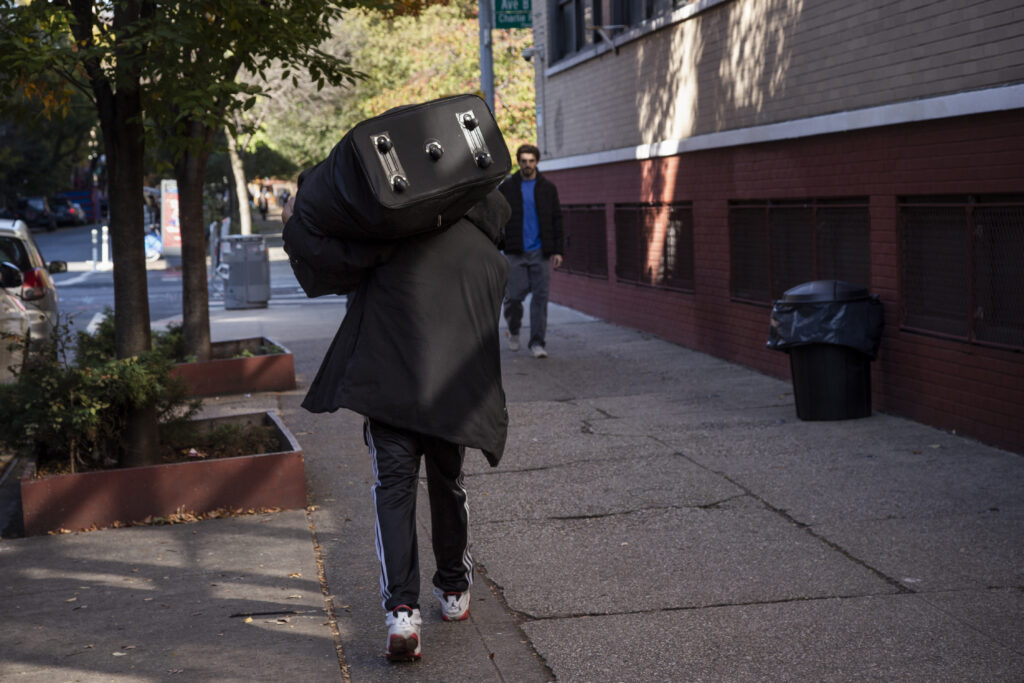
As the sun set and temperature dipped in Manhattan, migrants’ repeatedly voiced concerns about being forced out of shelter during the impending winter.
“Right now it’s really cold, this cold, this cold makes anyone sick,” David said, explaining part of his motivation to leave New York, where he no longer has shelter and was sleeping on the streets. “What we don’t understand is why they’re doing it right now, I mean, right now when it’s cold, do you understand me?”
Carlos Romero, a twenty-two-year-old from Venezuela, still believes that New York City is providing adequate shelter, even if it’s not a place to stay overnight. “Of course they’re still providing shelter,” he said. “At least, they keep throwing them there, so they sleep in chairs but they’re not cold on the street.”
According to David, after three nights of sleeping on the street, three of his friends eventually made it back into a city shelter, even though their stay had expired. “They had compassion and, well, thank God, they helped them,” David said. “They are now in a shelter where eight people live in a room, each one has a little bed, thank God.”
Just like New York’s official policies of eviction are not lining up exactly with the possibilities on the ground, Chicago’s promises of permanent housing for all are also not fulfilled quite yet. As of October 27, 3,344 migrants were still waiting in police stations or O’Hare airport for a place in a city-run shelter. Poor conditions and lack of space in police stations have led migrants to prefer setting up and living in tents outside the stations or in parks. When temperatures dipped below freezing on November 2, hundreds, including children, were still sleeping in tents. Wearing multiple jackets donated by local volunteers, one migrant reported to Block Club Chicago that the experience was “like a nightmare.”
Romero doesn’t think Chicago is a better option than New York for him to work and live independently. “I know a lot of people in Chicago and I watch the news and see people on the streets, if you understand me?” Romero said. “At least here in New York, I haven’t seen as many people [on the streets] as in other streets yet.” From his network in New York Romero has heard that in Chicago, “they are taking migrants out of shelters anyway.”
Miguel Carreño was turning twenty-nine just two days after he spoke to the Weekly. Asked if he’s looking forward to it, he said, “I hope it will be great! We are in New York, the dream city of many people!”
Like Carreño, Romero said he’ll stay in New York. “I plan to stay here for at least one more month, two more months,” he said. “Keep trying my luck. Get two jobs, three jobs, as many as you can take, the better.”
Wendy Wei is the Weekly’s immigration editor and covers solidarity between communities of color. Oscar B. Castillo is a Venezuelan photographer and multimedia artist based in New York City.

